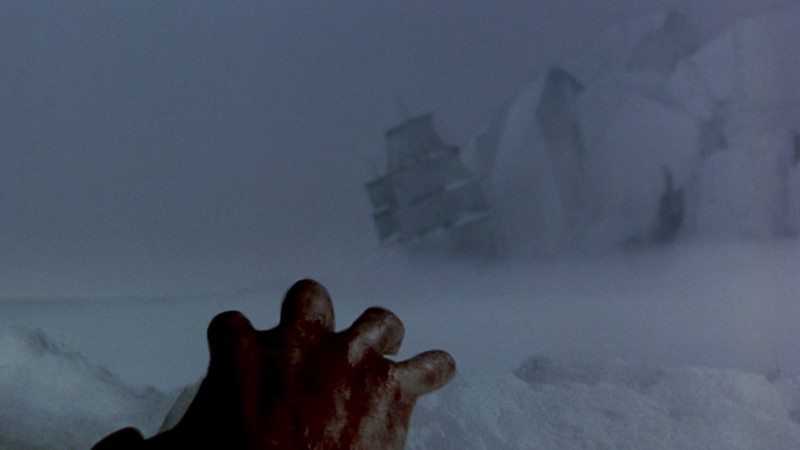I’m watching a bunch of Steven Spielberg movies. This time I watched Close Encounters.
Read MoreMovies
Watching Spielberg: Jaws
I’m watching a bunch of Steven Spielberg movies. This time I watched Jaws.
Read MoreFrom Loveland’s Favorite Movies of 2016
I wrote about lobsters, The Louvre, seawater, and my favorite movies of 2016.
Read MoreHot Take Express: The Best Christmas Movies
I wrote about nitroglycerin plants, Charlie Brown, and my favorite Christmas movies.
Read MoreJames Bond Will Never Be Boring

As someone who grew up playing GoldenEye on Nintendo 64 in my grandparents’ basement, I’ll always have a place in my heart for the adrenaline and boyhood wonder that James Bond triggers in fans of the franchise. I’m 23 years old and still stare in wide-eyed wonder at whatever James Bond is up to next. I don’t see myself ever growing tired of it.
Despite mixed reviews on its latest installment, I’m convinced that it’s impossible to make a boring James Bond movie. Spectre was pretty great. Was it as spectacular and immersive as Skyfall? Maybe not quite. Does it matter? I don’t think so.
It’s hard to mess up two and a half hours of explosions, guns, British women, martinis, and Aston Martins. I know this may be a bit of heresy coming from someone who has studied film, but the James Bond formula doesn’t need to be messed with. I’ll forgive plenty of plot issues when it comes to the adventures of 007. Whereas an ordinary action film would lose points for the kind of cliches and trite themes that Bond films bathe themselves in, Spectre uses them to its advantage.
Watch Daniel Craig race his Aston Martin DB10 through the dark streets of Rome and then tell me you have a problem with well-worn Bond tropes.
I shouldn’t make it seem like Spectre is just mailing it in. There are plenty of ways this one passes with flying colors. Just like the earlier films in this iteration, the cinematography is fantastic. Hoyte Van Hoytema (responsible for films like Her and Interstellar) did a fantastic job at nailing the gorgeous landscapes afforded to him in Spectre. From London, to Rome, to sandy deserts, to snowy mountains, this film was gorgeous from start to finish. The music followed suit, clearing the bar that was set by Skyfall. While the headline number by Sam Smith didn’t quite hit Adele’s mark, I’m not sure that anything could have. The acting was also up to snuff. As a Tarantino fan, I loved Cristoph Waltz as a villain, and Daniel Craig stuck the landing on what will likely be his final outing as 007.
He’s done a good job of making the character his own. Although not quite to the extent Christian Bale became Batman, Craig has truly carved his mark in the storied Bond legacy.
I think it says a lot about the job Sam Mendes has done that seemingly all lukewarm and negative reviews for Spectre are directly due to Skyfall’s success. If the worst thing someone can say about your film is that it was good but didn’t live up to its predecessor, I think you’ve done a good job. While it would’ve been nice to somehow usurp Skyfall’s crown in Craig’s finale, I’m not shedding tears over it. Spectre was pretty great.
The 10-year-old in me is cheering.
Hollywood’s Adaptations of Frankenstein Are… Okay

[Editor’s note: This was actually written for a Film Adaptation class I took during spring semester of 2014. This essay was half of my midterm grade. While I don’t remember what I got, I wanna say it was something like an A-. The prompt asked about how my interpretation of source material differed from the film adaptation’s interpretation. I looked at Mary Shelley’s Frankenstein and the 1934 and 1994 film adaptations. I tweaked a couple things for the purpose of this blog.]
The 1994 Frankenstein film adaptation had some flaws. There were some changes that director Kenneth Branagh and screenwriter Steph Lady made that change the way we view Victor Frankenstein and his monster. For better or worse, these little tweaks to the story have the ability to change the characters, especially for someone who may not have read Mary Shelley’s novel.
The first change I saw as notable was in the very beginning of the film. In the novel, Walton’s crew first sees “a being which had the shape of a man, but apparently of a gigantic stature.” The first hint we have toward the story’s plot is a fleeting glimpse of the monster. It isn’t until much later that we meet Victor and hear his tale of trying to chase down his awful creation. In the film, however, he and his monster are introduced in a much different way. We first meet a terrified Victor, and then afterwards see a brief shadowy glimpse of his monster. Walton’s dogs even try to chase after the beast. While many would write the change off as minor, it represents a fairly significant change in how the story is perceived. Right off the bat, the monster is portrayed as the predator. The monster is the bad guy. We’re introduced to a tale of Hunter versus The Hunted, but this time poor old Victor Frankenstein is the one that’s on the run.
This change falls in line with the 1934 adaptation. In that film, it seems the director has gone out of his way to completely absolve Victor of any wrongdoing. The blame is pinned partially on Victor’s boneheaded assistant for stealing a criminal’s brain for the experiment rather than the correct, healthy one. While the monster from the novel is the result of a perfectly executed experiment from Victor (thus pinning the blame on him and his lack of foresight), we can’t blame Victor in the film because that wasn’t how he intended for things to happen. Either way, both films portray a fairly angry and vengeful monster. Perhaps a man-hunting monster makes for better movie fodder. However, you could speculate some other reasons for this change.
I think the 1994 version wants us to really sympathize with Victor more so than the book does. We’re more enthralled when he begins relaying his story to Walton because we see him as someone to sympathize with. It’s arguably more interesting to hear a character present a story as someone in danger than as someone who’s made a string of mistakes. We begin our journey through the story on Victor’s side, rather than beginning it by blaming him for his predicament. This change also gives the viewer more respect for Victor and his intelligence than the novel does.
In the novel, Shelley is quick to show Victor’s ignorance. “If, instead of this remark, my father had taken the pains to explain to me that the principles of Agrippa had been entirely exploded … I should certainly have thrown Agrippa aside and have contented my imagination, warmed as it was, by returning with greater ardour to my former studies.” While he somewhat blames things on his father, we’re still introduced to the fact that he had no business studying such outdated material. We spend the entire opening portion of the novel waiting for him to mess things up. In the movie, I think the director plays the victim card for Victor, so we never really view him as a screw-up.
Another key difference the film makes is in the murder of Elizabeth. In the novel, the monster fulfills his promise to Victor by strangling Elizabeth on their wedding night. Victor then returns home where he finds and destroys the monster as vengeance for the murder of his bride. In the film, there is a huge change at this point in the story. The monster kills Elizabeth on her wedding night by literally ripping her heart out of her body. There seems to be a fairly obvious reason for this choice, as this action mimics the popular idiom. By tearing out Elizabeth’s heart, the monster has also torn out Victor’s in a figurative sense.
Things get weirder. Victor snatches up his wife’s corpse and hurries home to his lab, determined to bring her back to life. He’s desperate at this point, and is once again not thinking clearly. He uses pieces of Justine’s corpse, successfully stitches Elizabeth back together, and resurrects her. The monster returns to fight for Elizabeth, who he believes to be rightfully his. However, Elizabeth becomes disgusted with her new body, lights herself on fire, and leaps from the mansion to her death.
Wow.
This change partially plays into my earlier point about the movie giving Victor more credit for his intelligence. He quickly and deftly brings Elizabeth back to life. While it wasn’t a good choice, you have to admit that it was kind of impressive. By this point in the film, we’ve clearly seen Victor’s failings, but the director doesn’t pass up one more opportunity to how smart he actually is, thus perhaps giving the audience one last opportunity to sympathize with the smart, but unwise Dr. Frankenstein.
I think another possible interesting reason for the change comes from Elizabeth’s perspective. Although she’s briefly brought back to life, Victor has already lost hold of her. She was a lost cause as soon as she was murdered. After being revived, she first begins to side with the monster instead of Victor, but ultimately becomes so repulsed by the situation that she kills herself. In Elizabeth’s eyes, Victor has now become another monster, and this is a great way of illustrating that. The final straw in Victor’s heartbreaking tale is experiencing his wife’s death twice, the second time by her own doing, in order to flee from him. This is another reason we can sympathize with Victor’s tragic tale. While gruesome, the director does a great job of clearly showing that all three characters in the scene have become monsters in their own way.
Ultimately, while I may not agree with the director’s changes to Frankenstein, I do think they can spark some good conversations for those that are familiar with the novel. Some of the changes are minor, and some are pretty major, but they all affect the way we perceive Shelley’s characters.




